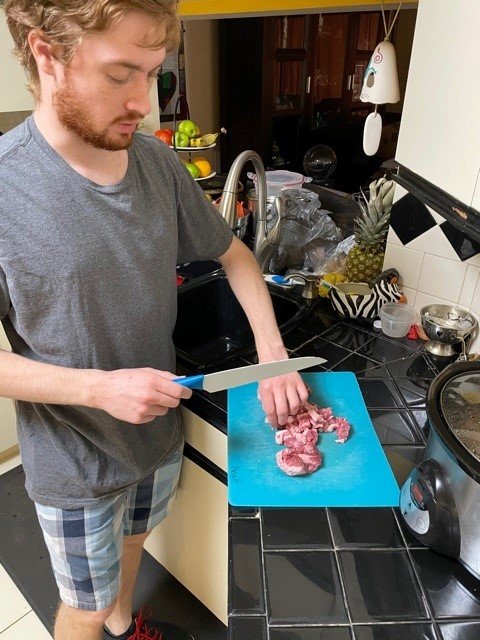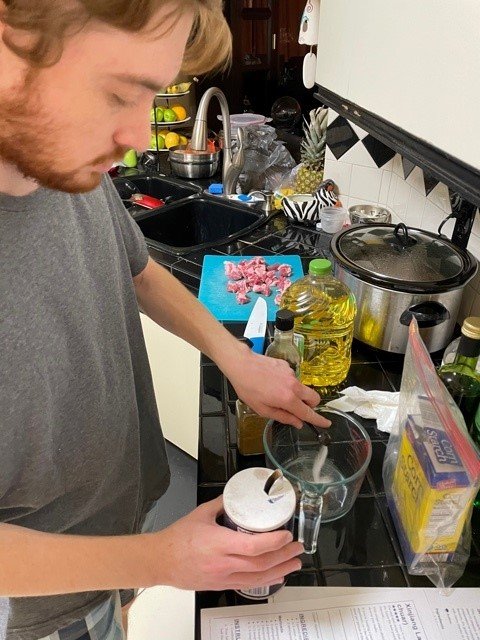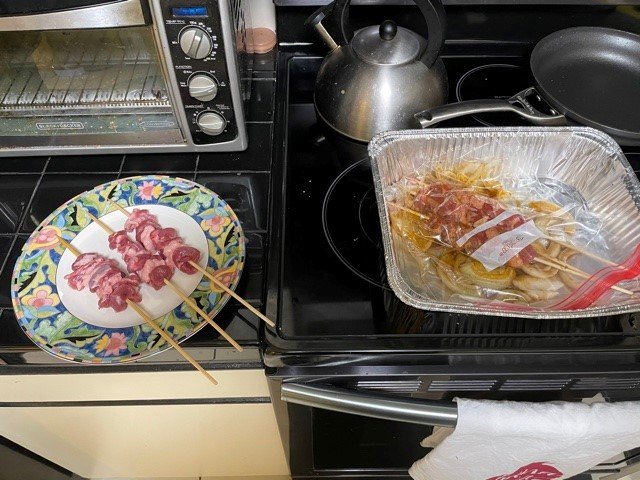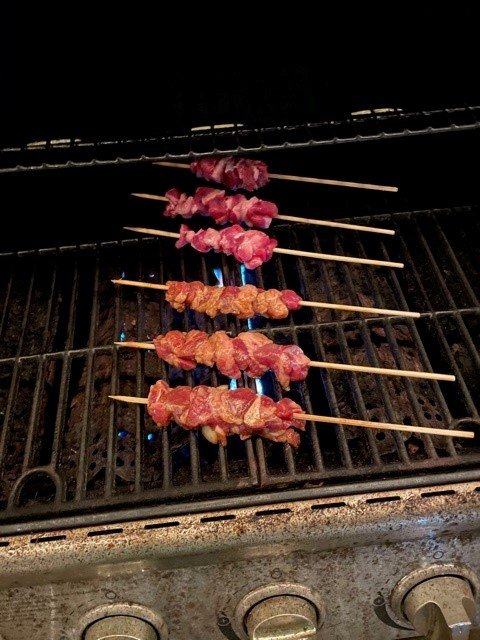Flame-Broiled Mutton Skewers, per Yuan Mei’s “The Way of Eating” and Xinjiang’s Street Vendors
Background
Despite beef’s place of prominence in Western cuisine, neither beef nor other red meats had much prominence in Eastern Asia - or at least, in most of it. Yuan Mei admits as such: “Cattle, sheep, and deer are three animals that are not commonly served in the households of southerners” (Yuan, 2019). However, China’s conquest by the Mongols in the 13th century meant that a culture that did partake of such meats on a regular basis was suddenly blending into China’s more traditional cuisines, to the degree that Yuan Mei still compiled a variety of recipes pertaining to the preparation of the meats of the “Hoofed Tribe”, as he puts it. Indeed, while southern Chinese rarely - if ever - partook of beef and mutton, the Mongols and Muslims who lived in the northwestern regions of China consumed both regularly, with mutton being the protein of choice for many (Simoons, 2014).
From the recipes that Yuan Mei provided, I selected the flame-broiled mutton. It’s a simple recipe - take mutton and put it on skewers, then broil it over flames.
Let me be clear, that is quite literally the entirety of the recipe provided.
(Yuan, 2019)
It is certainly possible to cook mutton according to this recipe. I did, in fact, as shall be detailed later. But it is… lacking. Specifically, lacking specifics. I suspect that the process of broiling may have also implied some particular techniques unknown to me; after all, while I did find some sweetness to the product, I would not say it was quite the same as Yuan Mei proclaims.
Regardless, the simplicity of this recipe - and it certainly is simplicity itself - led me to look for what has become of it since. After all, meat cooked on a stick comprises a vast family of dishes, and one that still runs strong today. Indeed, on the streets of Xinjiang, a variety of lamb skewers - not terribly changed from Yuan Mei’s - is a popular meal or snack. At their core, the dish is still broiled lamb skewers, though now cooked on a grill rather than an open flame as may have previously been used. However, the new recipe takes advantage of the modern availability of spices, liberally using cumin and chili powder to produce a more savory flavor with a bit of a kick. (Zhu, 2020)
In particular, the recipe is as follows (Zhu, 2020):
Produces 12 skewers
INGREDIENTS
1 pound (450 grams) lamb meat (lean fat ratio 7:3)
1/2 onion , sliced
2 tablespoons whole cumin seeds (Optional)
Marinade
2 tablespoons peanut oil (or vegetable oil)
2 tablespoons light soy sauce (or soy sauce, or tamari for gluten-free)
2 teaspoons cornstarch
2 teaspoons cumin powder and extra for grilling
1/2 teaspoon chili powder and extra for grilling
1/2 teaspoon salt
1/4 teaspoon Sichuan peppercorn powder (Optional)
INSTRUCTIONS
Combine oil, soy sauce, cornstarch, cumin powder, chili powder, and salt in a small bowl. Mix well.
Trim fat from the lamb meat if necessary. Cut lean part into 1.5-cm (0.5-inch) cubes. Cut fat into thin pieces half the size of the lean pieces.
Thread lamb cubes closely onto skewers, alternating between lean meat and fat cubes (*see footnote 2).
Spread onion inside a 1-gallon ziploc bag. Place lamb skewers on top of the onion. Pour the marinade over the lamb. Massage the bag so the lamb is covered evenly with the marinade. Seal both sides of the bag and place upside down, the onions facing up. Let marinate for 30 minutes at room temperature or overnight in the fridge.
Build a modified two zone fire, and leave some space without any coal.
Transfer the lamb skewers onto the grilling grate, one finger’s width apart. Flip frequently until the lamb turns dark brown on all surfaces. Move to indirect fire. Generously sprinkle a layer cumin powder, then chili powder (or you can skip the chili powder if you don’t want the lamb to be too spicy). Flip, then sprinkle another layer of cumin powder. Sprinkle whole cumin seeds onto the lamb for extra flavor, if using. Grill until the meat is cooked through.
Serve immediately. Or move to the side of the grill without coal to keep warm.
Practice
Okay, so these recipes are all well and good, but what is cooking them like? Altogether, not unlike anything else that I’ve grilled with my father - though putting the pieces of lamb onto skewers was a hassle and a half. Let’s take a look.
Before anything can be done with the meat, it needs to be chopped into suitable pieces, of course.
After the lamb was sufficiently chopped up, it was time to place them on the skewers, alternating pieces of actual meat and bits of fat. I used wooden skewers instead of the metal ones suggested by the recipes, however, as I didn’t have any metal skewers available to me. Getting the pieces of meat to actually go onto the skewers was an exercise in frustration, though; they’d frequently get caught at the tip of the skewer, stubbornly refusing to slide any further down without a good minute’s struggle.
Of course, half of the skewers were going to be marinated in a cumin/soy sauce marinade. You can see the mixing process below.
The cumin skewers were left to marinate in a bag, after I massaged (recipe’s words) the marinade into them. They were also left on a bed of sliced onion for the duration, though I am unsure as to how the affected the flavor in the end.
And here are the skewers at the end of the preparation process! The cumin skewers still needed to marinate, and my family wouldn’t be having dinner for a while besides, so these were left like this for a while - unseasoned lamb in the fridge, cumin lamb only getting refrigerated after its half hour of marinating.
Come evening, it was time to cook! There were some difficulties - the light I was trying to grill with was completely out of batteries, and the grill itself was low on gas to cook with - but despite those issues, the cooking actually went quite well! The skewers - both by Yuan Mei’s instructions and those of modern street vendors - turned out delicious.
And below, we can see the final product! The left-hand skewers were unseasoned, cooked according to the Way of Eating. Those on the right were marinated in the cumin sauce, in accordance with practices on the modern streets of Xinjiang.
So what did we learn?
Excellent, I made lamb skewers, and they were delicious. So what? What does this mean, in the greater scheme of things? What does it mean for the traditions of Chinese cookery?
Not terribly much, in all honesty. After all, as previously covered, mutton was hardly a common meal in China - only 1% of peoples’ calories came from the stuff, and that’s when you consider it to cover both sheep and goat meat, as the Chinese did (Simoons, 2014). However, what we can look at is the evolution of the dish - specifically, the introduction of spices in its preparation. What happened there?
To a degree, the same thing happened there as what introduced mutton to the Chinese palate in the first place: the conquests of the Mongols. As the Mongols conquered vast swathes of Asia, they gained access to a large array of spices, which they would have been free to experiment with to see what best fit their cuisine. Trade along the Silk Road, too, would have contributed; just as Muslims came to China along it, so too would have their culinary traditions from India and the Middle East, bringing their taste for meat, and their own spices with which to flavor their foods. In the modern day, the much greater ease of acquiring spices lowers the bar for who can use them cheaply, allowing modern street vendors to prepare their lamb skewers in this fancier manner.
However, I think it is also worth considering that Yuan Mei’s recipe for flame-broiled mutton may, in reality, not have been as plain as I cooked it. Although I do not know his standards for sweetness or crispiness, what I cooked only seemed to have a hint of sweetness under its meaty flavor, and I would not have called it especially crisp. As Yuan Mei was writing the passages on the “Hoofed Tribe” primarily for people relatively unfamiliar with cooking red meat, I do not believe that there was some practice for seasoning mutton specifically that I missed out on, but I do suspect that the instruction to “broil” the meat implies more than was translated. Maybe the original recipe has a marinade of its own that we are not told of, one with relatively plentiful sugars to caramelize on the meat. Perhaps Yuan Mei simply did not know the recipe itself; he admits to similar failings elsewhere in his book. It is even possible that I cooked the mutton in precisely the way Yuan Mei intended, and my standards are merely different - or, more likely, I simply am less skilled in the cooking of unseasoned meat. Whatever the case may be, I expect there is plenty more to know about the broiling of lamb skewers than what I know today.
Citations
Simoons, F. J. (2014). Beef and Mutton. In Food in China a cultural and historical inquiry (pp. 301–305). essay, Chapman and Hall/CRC.
An academic paper on, well, food in China. I am particularly referring to the section that regards mutton and its consumption; it goes into details about who eats it, and when it was prominent or not. Unfortunately, there were no details on how it was prepared.
Yuan, M., Chen, S. J.-S., & Mones, N. (2019). Hoofed Tribe. In The way of eating: Yuan Meí's Manual of Gastronomy (pp. 82–82). essay, Berkshire Publishing Group.
The original, primary source for my flame-broiled lamb recipe.
Zhu, A. M. (2020, June 19). Xinjiang lamb skewers (新疆烤串, chuar). Omnivore's Cookbook. Retrieved December 6, 2021, from https://omnivorescookbook.com/xinjiang-lamb-skewers/.
The source of my modern lamb skewer recipe. Not much different from the original, all things considered.
All uncited pictures were taken by myself or by my family members during the process of making the skewers.























